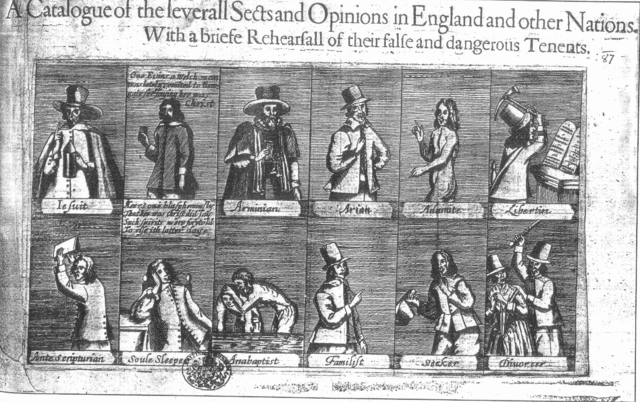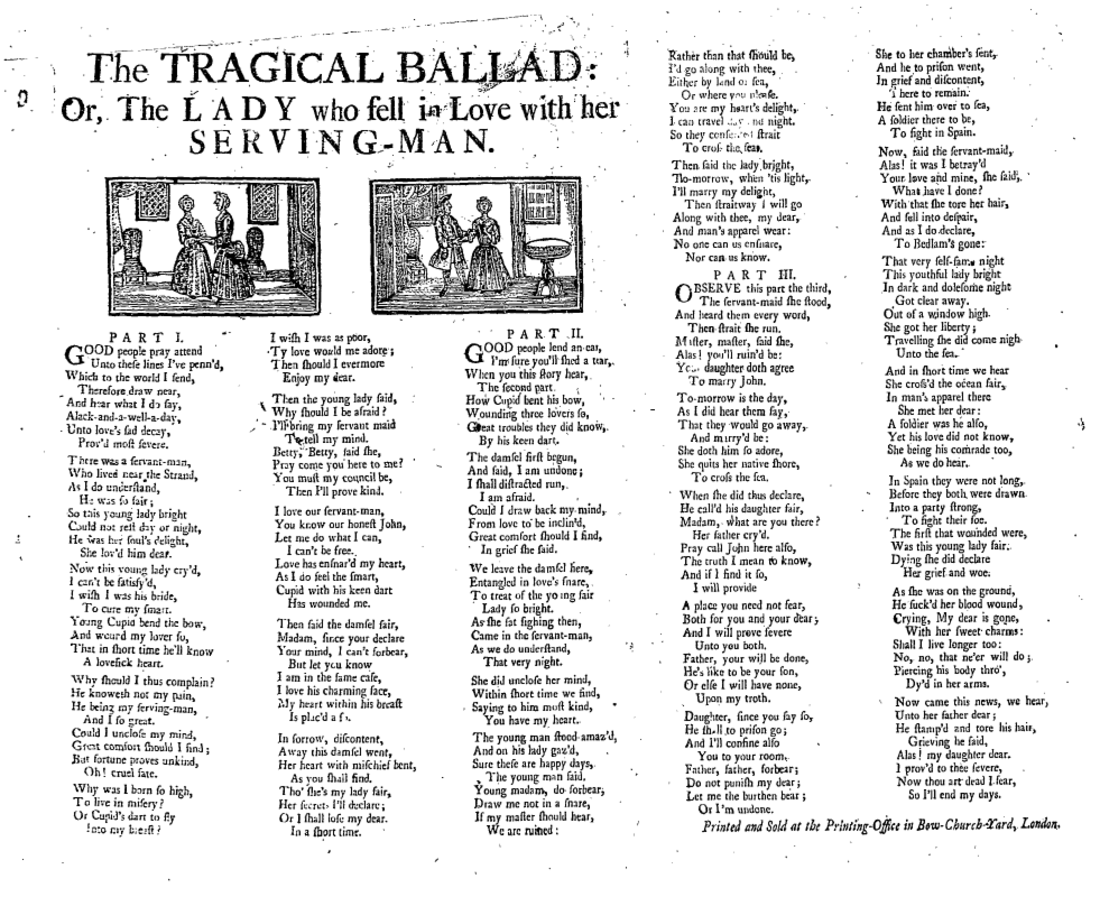Street literature
Types of publication sold in public areas From Wikipedia, the free encyclopedia
Street literature is any of several different types of publication sold on the streets, at fairs and other public gatherings, by travelling hawkers, pedlars or chapmen, from the fifteenth to the nineteenth centuries. Robert Collison's account of the subject describes street literature as the "forerunner of the popular press".[1]

Leslie Shepard's History of Street Literature identifies a range of different publications as indicated by the subtitle: The Story of Broadside Ballads, Chapbooks, Proclamations, News-Sheets, Election Bills, Tracts, Pamphlets, Cocks, Catchpennies, and Other Ephemera. Street literature therefore includes several different printed formats and publication types.[2]
Broadside ballad
Broadside ballads are traditional ballads printed on one side of a full sheet or half sheet of paper, often in landscape orientation. Intended to be pasted on to walls for public consultation.
Chapbook

Chapbooks were small, paper-covered booklets, usually printed on a single sheet and folded into books of 8, 12, 16 or 24 pages, either stitched or unstitched. There are several sub-categories of chapbook, notably:
- Histories - 12 or 24- page booklets containing popular accounts of historical figures, traditional tales, fairy stories etc.
- Patters - 8 or 16-page publications containing simple religious texts, humorous or sensational stories such as accounts of murders or natural disaster. Sold by a patterer, which was 'a noisy talkative street hawker of songs, last dying speeches, &c.'.[3]
- Collections - 8 or 16-page publications containing collections of the lyrics of popular songs.

Popular prints
Popular prints encompass a wide range of cheap printed images of differing sizes and for different purposes. They were generally of low artistic merit and often contained sensational, humorous or bawdy subjects.

Slip songs
The lyrics of popular songs printed four or eight to a sheet and cut into slips, to be sold to theatre-goers or those attending other places of public entertainment.
Other terms used
Summarize
Perspective
While the term street literature (coined in the mid-nineteenth century) is common, there are several other terms used in association with street literature which categorise the type of content rather than the format. These terms are not mutually exclusive
- Almanac – an annual publication listing a set of events forthcoming in the next year.
- Catchpenny – cheap, mass-produced sheets printed on one side on unfolded sheets of paper.[4]
- Cock – fictitious narratives, in verse or prose, of murders, fires, and terrible accidents, sold in the streets as true accounts. "The man who hawks them, a patterer, often changes the scene of the awful event to suit the taste of the neighbourhood he is trying to delude."[5]
- Garland – originally used as an anthology of poems on a particular subject but the term was later used as a general descriptor in the titles of broadside ballads and chapbook histories (e.g. 'The amorous lady's garland; or, the handsome butcher of St. James's Market').
- New-sheet – single sheets containing accounts of sensational news (murders, accounts of battles, natural disasters etc.), the fore-runners of newspapers, but published intermittently rather than serially.
- Squib – a handbill containing short humorous or satiric writing, often associated with elections.
- Gallows literature – a collective term for the biographies, confessions, "last speeches," and other verses supposedly written by felons, sold at public executions.
- Tracts – some religious and political tracts would come under the category of street literature, especially those (such as the Cheap Repository Tracts) designed for popular consumption and to replace other forms of street literature.
- Other printed items such as advertisements, playbills, handbills, public notices, etc. are sometimes listed under this term but since they are not sold they would be better described as printed ephemera.
References
Bibliography
External links
Wikiwand - on
Seamless Wikipedia browsing. On steroids.
